OPINION
China’s economy: Policy failure or paradigm shift?
Published
on
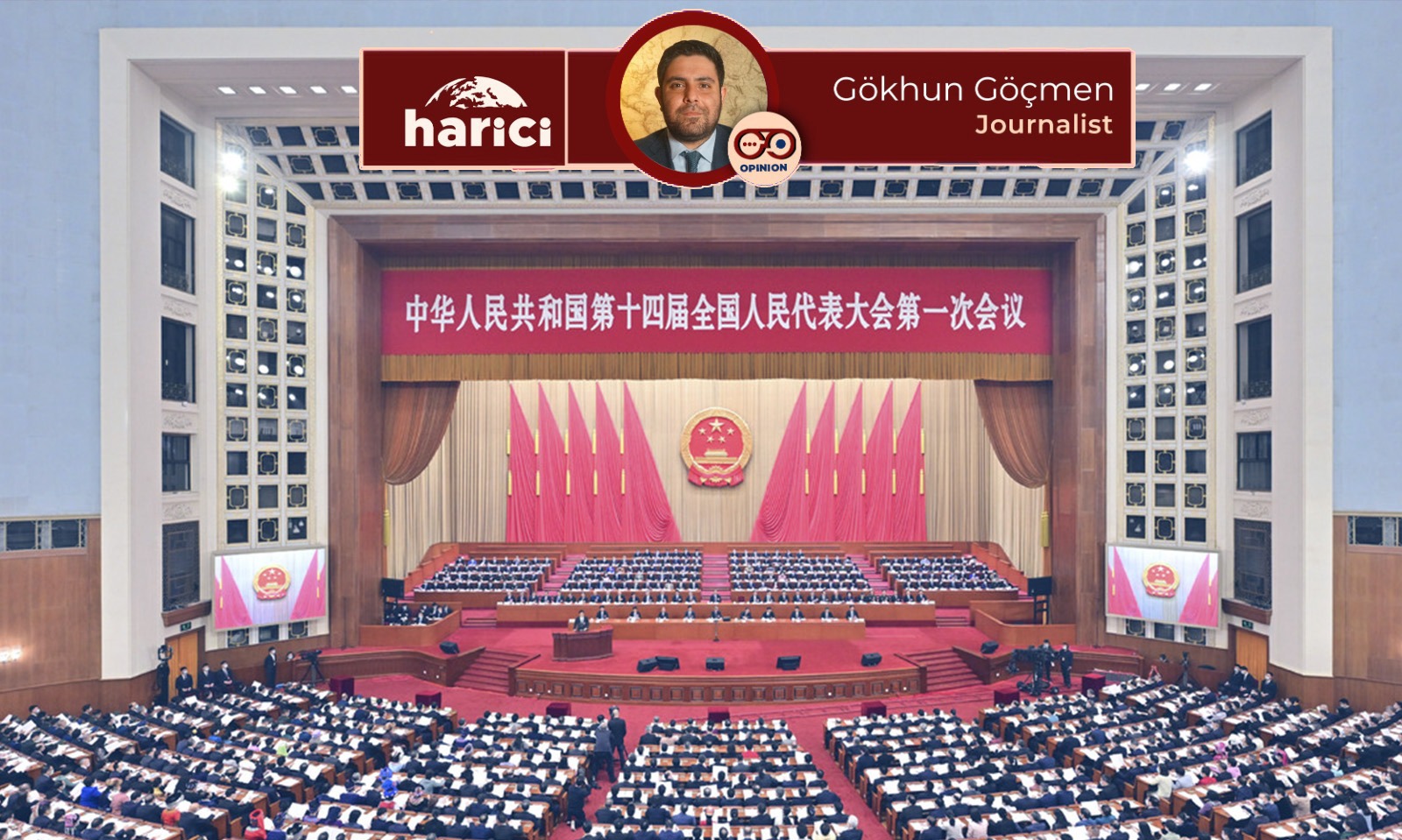
The meetings of the 14th Chinese People’s Political Consultative Conference and the 14th National People’s Congress, known as China’s most important annual political event, have begun. They are known in the West as the ‘Two Meetings’ and in China as the ‘liang hui’ because they begin one day apart. The Chinese People’s Political Consultative Conference, attended by more than 2,000 delegates from eight parties other than the Communist Party of China and various sectors of society, is, as its name suggests, a consultative body. The National People’s Assembly is the highest legislative body, with around 3,000 delegates from the CCP and other parties.
Delegates elected by the People’s Assemblies from the remotest corners of the country, from provinces and cities to counties and townships, are also important for understanding political participation in China. In his article for The Diplomat, Patrick Meyer of Peking University preferred the term ‘capillary democracy’, while the Chinese media’s coverage of the two sessions in 2023 emphasised that the process was a living example of ‘full-scale democracy’. These concepts, highlighted at a time when US President Joe Biden claimed that autocracy and democracy fronts were at the heart of international alignment, were later followed by the Chinese Foreign Ministry’s report entitled ‘The State of Democracy in America’.
What does the data say about China’s economy?
Coinciding with the 75th anniversary of the founding of the People’s Republic of China, the narrative of this year’s meeting of the two leaders is dominated by the economy. While the Western press declared that the ‘Chinese miracle’ was over, US President Joe Biden likened the Chinese economy to a ‘ticking time bomb’.
There are three interrelated reasons for these assessments in Western capitals. The first and most important is the 5.2 per cent growth rate that the Chinese economy is expected to achieve in 2023. Although this rate is above the global average of 3 per cent and satisfactory for many countries, it is the lowest level for China since the 1990s (excluding the pandemic period).
The performance of China, which has become the world’s second-largest economy and the engine of global growth with an average growth rate of 9% for many years, is thought to have been affected by policies geared towards the property market. It should not be forgotten that stagnation in the property sector, which accounts for a quarter of China’s gross domestic product, is a source of employment for millions of people and increases unemployment rates.
The second reason for the pessimistic picture of the Chinese economy is the declining share of exports in economic growth. According to the 2023 data, China’s exports fell by 4.6 per cent to $3.38 trillion. It is clear that geopolitical tensions are behind this contraction rather than the ‘invisible hand’ that regulates markets.
In order to prevent the rise of China and maintain its hegemonic position in the global system, the United States and its allies have for some time been trying to diversify their supply chains in the name of ‘de-risking’. It is not surprising that by 2023 Mexico will overtake China as the largest exporter to the US for the first time in 20 years.
The third reason for believing that China’s growth will eventually cease to be a ‘model’ is the country’s changing demographics. While this change may not set off alarm bells in the short term, Chinese experts recognise that it is a serious challenge.
While China’s National Bureau of Statistics reports a population decline of 850,000 by 2022, models by the United Nations Population Division suggest that China’s population could fall below 800 million by 2100. Beijing is also concerned about its growing elderly population, with the National Health Commission predicting that the number of people over 60 will rise from 280 million in 2022 to 400 million in 2035.
Geopolitical pressures and new productive forces
Western pundits are analysing policy failure, arguing that China’s high growth rates have come to an end and that the success story based on external demand is eroding. Such a judgement (if not wishful thinking) may be premature. Indeed, the economic policies that China has been pursuing for some time point to a paradigm shift rather than failure.
According to the Chinese leadership, which believes that analysing the economy in terms of short-term growth rates is short-sighted, what is needed is to succeed in changing the means of production and the relations of production in a way that captures the spirit of the times, however painfully. This technology-centred concept, known as the High-Quality Development Plan, was introduced by Chinese leader Xi Jinping in 2017, then included in the 14th Development Plan in 2021, and finally elaborated at the 20th Party Congress.
As a result of the two current sessions, the concept of ‘new productive forces’ is expected to serve as a guide for China’s journey towards ‘high-quality development’. Based on the fact that traditional intensive labour has been replaced by data and artificial intelligence has transformed production relations, the Beijing administration laid out nine basic tasks at the Central Economic Work Conference in December, with the statement ‘scientific and technological innovation should lead the development of the modern industrial system’ at the top of the list. In short, China will stop devoting most of its resources to the traditional labour-intensive model and talk more about ‘chips’, more ‘bio-manufacturing’, more ‘artificial intelligence’ or ‘humanoid robots’, as we have seen in recent years. In this context, it is worth remembering China’s efforts to close the gap with the US, the leader in this field, by investing $456 billion in R&D by 2023.
It is clear that the changing geopolitical landscape is also affecting China’s focus on the New Development Plan. The trade wars that began under former US President Donald Trump and continued under current President Joe Biden, as well as the rise of global protectionism, have increased the importance of domestic demand for the Beijing government.
By increasing the share of domestic consumption in GDP growth by 43.1% to 82%, China is taking a serious step towards weaning itself off its dependence on external demand, and this share is set to increase as the consumer confidence index rises. It should be added, however, that China has not given up the expectation of exports or foreign investment. In line with the high-quality development model, sales of electric vehicles and solar panels are expected to increase by 30% and 54% respectively by 2022. This model, which relies on the domestic market but does not postpone exports, was announced by the Chinese at the end of 2020 under the name of ‘double circulation’.
In terms of demographic change, which could be a long-term concern for China’s economy, the country aims to increase the number of newborns in the long term while investing in systems such as artificial intelligence, robotics and automation that will help close the employment gap. In China, once known for its one-child policy, the new family planning law makes it easier for a third child to receive state support.
Potential challenges for China
It would be overly optimistic to expect China’s high-level development framework and the notion of new productive forces, which we will discuss more in the future, to be implemented without challenges. For example, China needs to increase the purchasing power of consumers as a prerequisite for its reliance on the domestic market. This requires the expansion of the middle class, currently estimated at 400 million out of a population of 1 billion 400 million.
Aware that China is going through a ‘special period’, Sheng Laiyun, deputy director of the National Bureau of Statistics, said at the announcement of the 2023 data: “The Chinese economy is currently at a critical stage of transforming its development model and optimising its economic structure.”
The extent to which a country as large as China will successfully complete this paradigm shift is one of the most important issues to watch. The success of the process, the speed and the sustainability of the transformation may bring a new version of the debates on the Chinese model, once famous in Turkey, to our agenda.
You may like
-
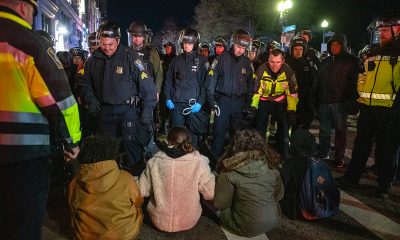

Police violence continues on US campuses
-
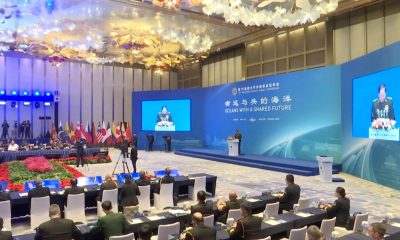

Philippines skips China’s Navy Forum coinciding with US drills
-
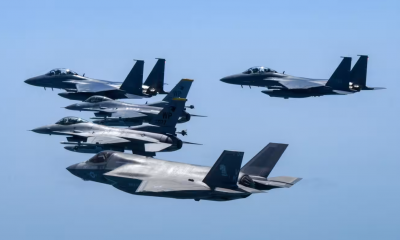

South Korea and the US conduct their largest-ever combined air exercises on the Korean Peninsula
-
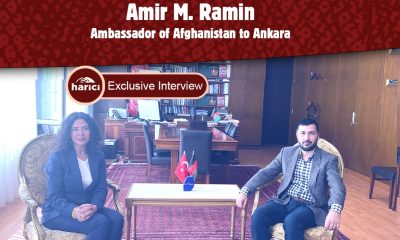

‘There is a migrant problem in Türkiye; if the situation in Afghanistan goes worse, it will be a serious problem’
-


Blinken will travel to China amid concerns of global issues
-


US agrees to pull troops out of Niger
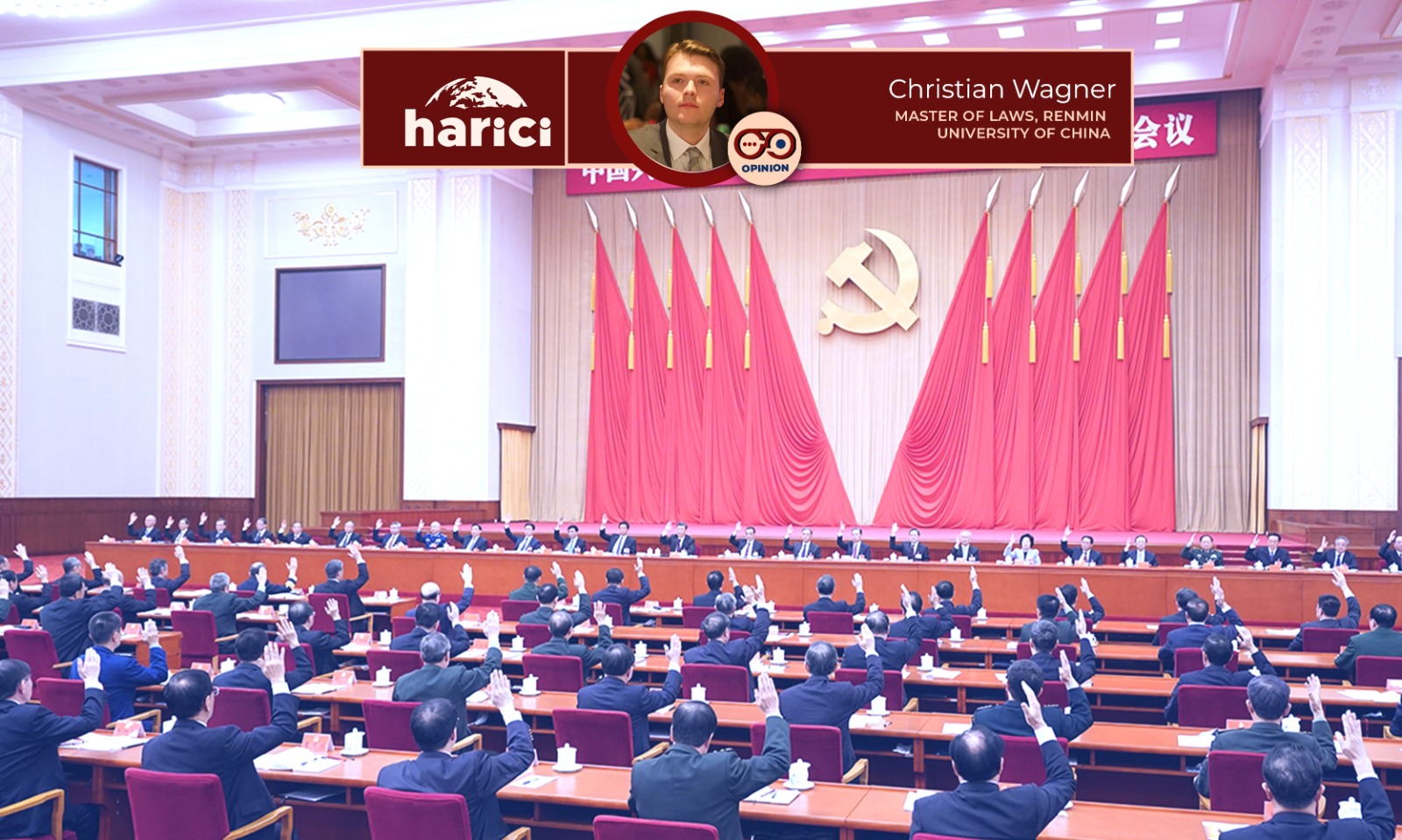
China is often portrayed as an “evil” communist dictatorship where allegedly no one can freely express their opinions. But is this really the case? How does democracy function in China? After all, China describes itself as a democratic state. A thorough on-site investigation is necessary to clarify these questions. – Christian Wagner (Beijing)
Expertise Instead of Activism: Democracy in Beijing’s Subdistricts
In March 2024, an investigation took place in subdistricts of Beijing (Haidian). Participants included local residents, lawyers, janitors, property management, sales representatives of the property, and a party representative who chaired the discussion. The topic was the introduction of mechanical speed limits to slow down cars, a discussion at the grassroots level in the neighborhoods. I had the opportunity to participate in the discussion and examine grassroots democracy in China.
In the Kongjia Community of the Haidian subdistrict of Beijing (Zhongguancunjiedao), the viewpoints of all participants were thoroughly discussed democratically. The party leadership only took on the role of facilitating the discussion and summarizing the results. It was interesting that it was not a classic debate aimed at overriding opinions. Rather, each participant sought to empathize with the perspective of others, including absentees such as children, the elderly, or drivers themselves. Both inclusive and psychological factors were considered, and a proportionality assessment took place. In the end, a solution was found that was in the best interest of all parties involved.
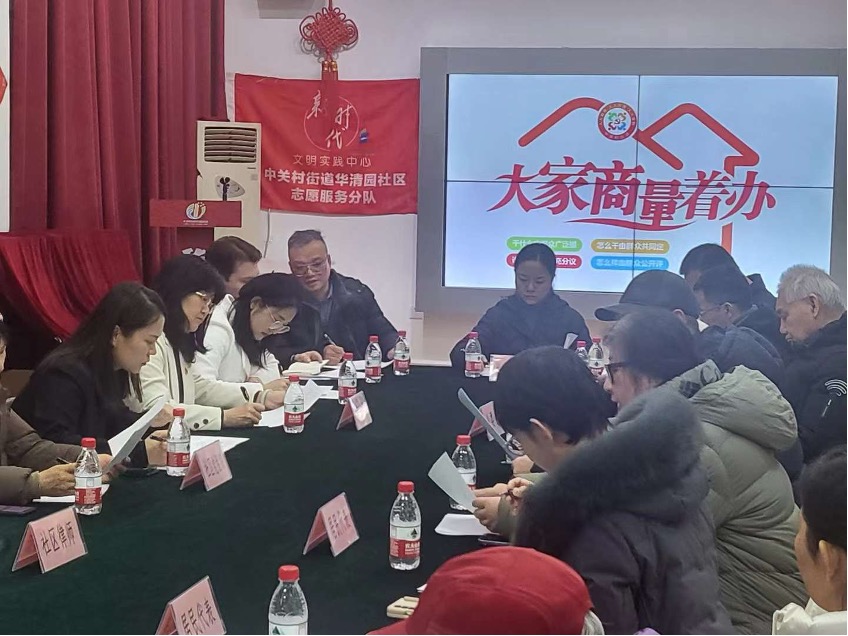
During a personal conversation with an elderly neighbor, it was strongly emphasized to me how crucial it is to involve experts. He said that “in China, every democratic discussion is characterized by an academic approach in which experts play a central role with their expertise. Political representatives who lack expertise in relevant areas face too great a challenge in analyzing complex issues adequately. Instead, they tend to argue purely based on their emotions, which ultimately serves no one. Therefore, it is of enormous importance that the party incorporates experts and acts as a mediator between the various sides. In this sense, the party acts almost like a wise father who gathers his children around a table to promote a factual and constructive discussion.”
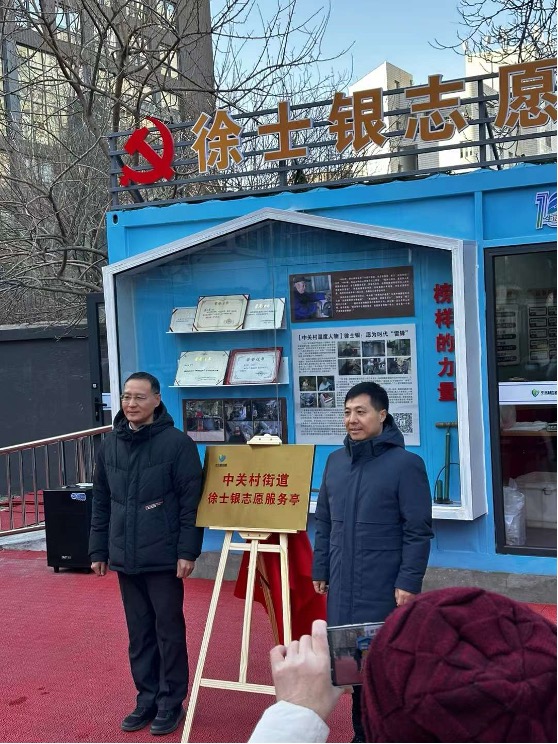
In another small subdistrict with several tens of thousands of residents in the million-strong city of Beijing, called Huaqinyuan Community, there was a discussion on how local businesses and residents can live together in harmony. In China, companies also have local “citizen duties”. The Communist Party of China supported the organization, so a local research institute for the aerospace industry supported the construction of a small kiosk and a children’s playground.
I was able to attend the opening ceremony, where subsidized food was sold to retirees. In addition, employees of the research institute supported the repair of bicycles or other small tasks for the neighborhood population. In general, all neighborhoods have a shared office where both party members and neighborhood residents or members of other parties sit and take care of administrative tasks, order, coordination, bureaucracy, local development, or opinion formation.
At the opening, I asked a representative of the office about the current challenges in the community. He mentioned that the biggest problem was that fewer and fewer young people were interested in getting involved in the neighborhood, as they increasingly sit at home in their virtual world. I pointed out to him that similar challenges also exist in the West. However, he explained that the role of the party is crucial. Through its networks, it can help, and especially students from various social platforms volunteer.
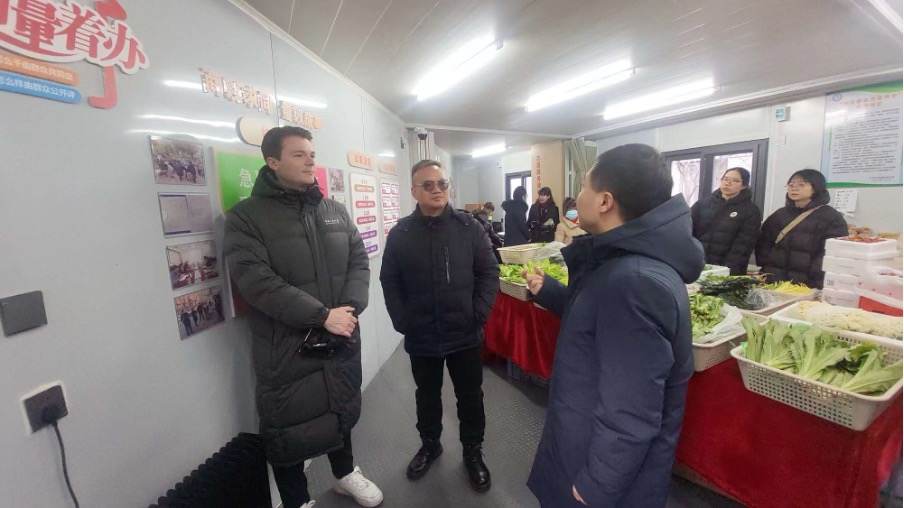
Businesses and “citizen duties”: Investigation of the entire Haidian District
This was one of the numerous events in Beijing where representatives of local businesses and the seven democratic parties, under the organization of the Communist Party of China, came together from all subdistricts in Haidian (about 3 million inhabitants). Companies like Microsoft were also represented. Some companies presented how they want to improve the lives of everyone in the entire district together with the local government and citizens.
Presentations were also shown on how better cooperation between local businesses can be achieved. Topics such as the construction of a “Smart Infrastructure City”, an “Artificial Intelligence City”, and an “Intelligent Production and Supply Chain” were discussed in particular. Companies compete to demonstrate outstanding achievements in improving the local living conditions of the people and thereby receive special support from the government and party. It’s a win-win situation.
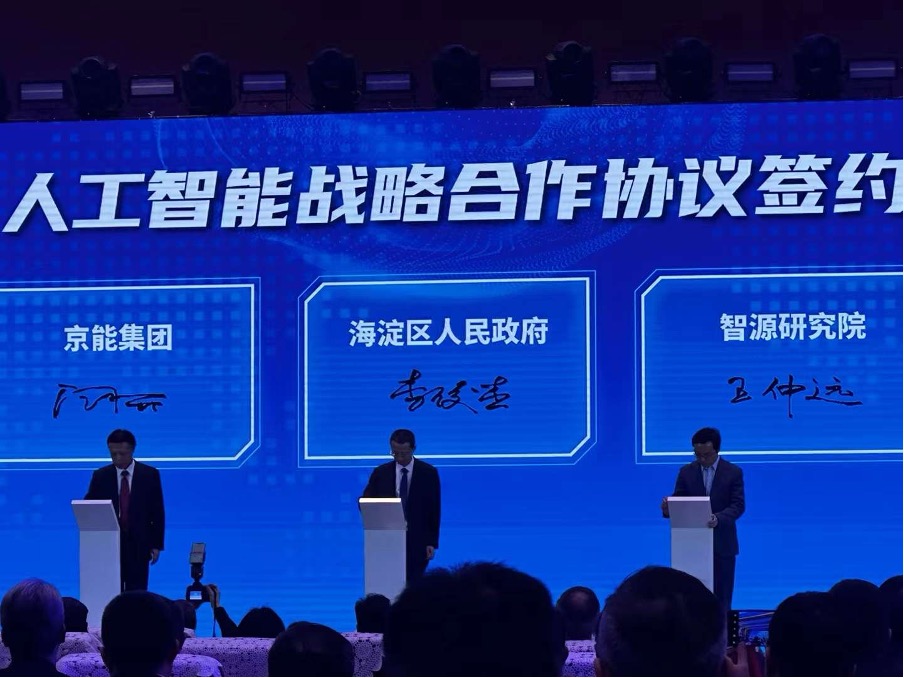
Exposed Illusions: Western Misconceptions about Communism and Democracy in China
There are still widespread misconceptions in the West about communism, often leading to the belief that it is supposed to take from the rich and redistribute to the poor, similar to Robin Hood. In reality, however, this notion is more of an extremism, which Lenin himself referred to as the “infantile disorder of communism”.
Mao Zedong emphasized in his work “On the Correct Handling of Contradictions Among the People” that it is naive to believe that contradictions between people can simply be eliminated. Rather, it is about finding ways for everyone to pull together. The Chinese concept of win-win cooperation stems from this idea. At the grassroots democracy level in China, this means that companies, the local population, the government, individuals, and all democratic parties work together to address issues of public interest. Public interest especially means that local people find work, are adequately supplied with affordable food, and have housing.
China has often struggled with poverty and hunger in the past, similar to many other developing countries. Therefore, it is of the utmost importance to stabilize this basic supply. Through these efforts, the People’s Republic has been able to lift over 800 million people out of poverty. It is a mistake to assume that companies are forced to do so. In fact, companies benefit greatly from their own investments and can test their own products in practice and conduct experiments, invest in the education of young people locally, or even improve their own structures, instead of just paying taxes.
China’s democratic system has two levels. On the one hand, there is the central government, which sets framework guidelines and laws from top to bottom. On the other hand, there is the “collective” or “inclusive” democracy on a horizontal level, where all participants of public space are involved in debates, especially experts. Therefore, activism is also frowned upon because activism is often associated with people arguing based on their feelings without considering the profound overall circumstances. Activism therefore takes place, among other places, in universities in the form of professional debates.
OPINION
Iranian retaliation: Moving through conspiracy theories
Published
2 weeks agoon
17/04/2024By
Hasan Ünal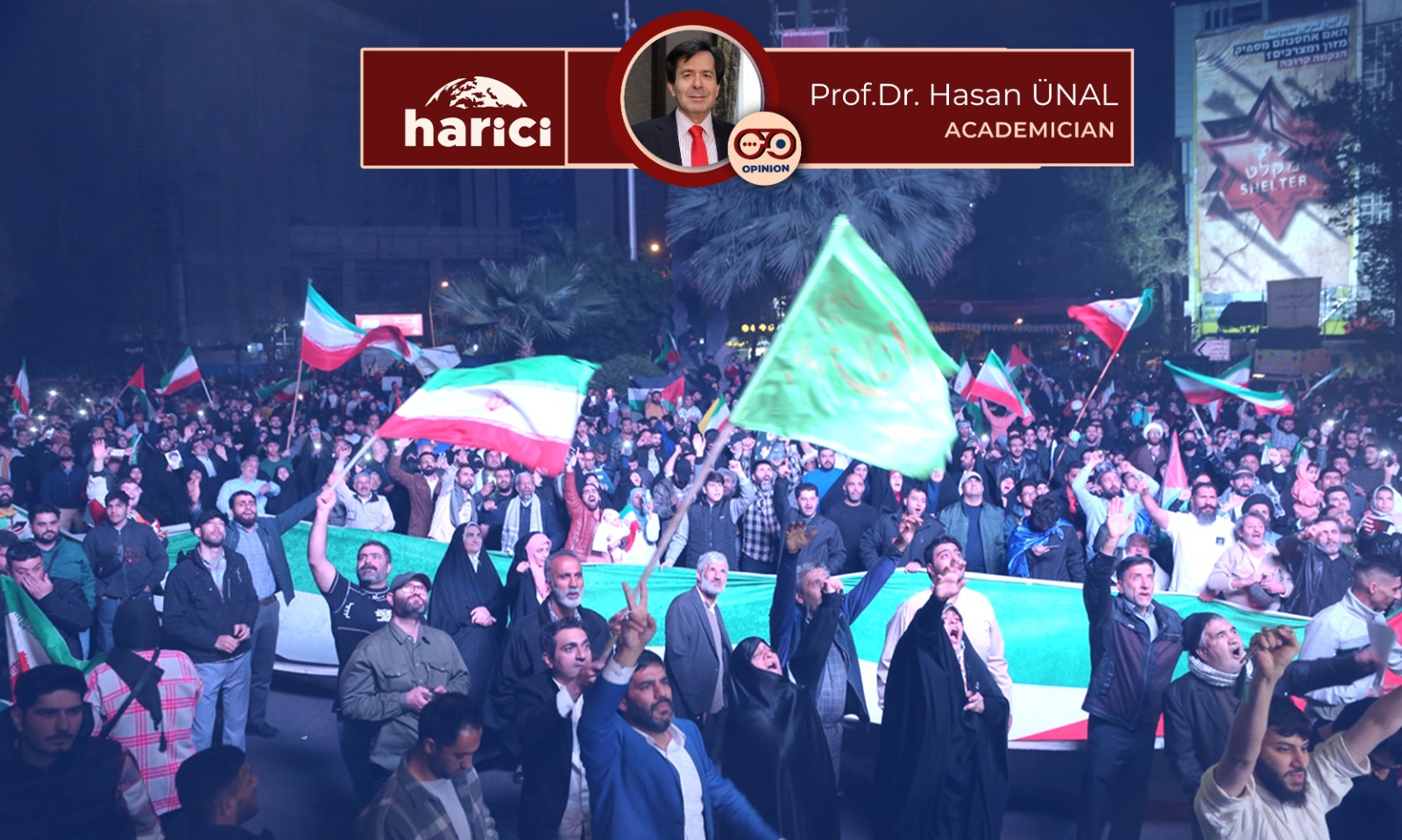
Iran’s retaliation against Israel has once again revealed the wonderful products of our conspiracy theory industry. I have no doubt that we will be in the top three in the world without having played a game, and if we are on form we will be playing either a Middle Eastern or Balkan country in the final. If conspiracy theories were an exportable product, we would certainly be in the top five in the world in terms of per capita income.
In fact, the tensions between Iran and Israel are literally a game of chicken. In reality, the Iranian regime is just one of Israel’s puppets. The government in Tehran pretends to be against Israel, but behind the scenes it is working with it. If it can mobilise hundreds of drones, why doesn’t it hit important Israeli targets? Or why has no one been killed in Israel?
Of course, I know that there is no point in trying to refute them; but it is impossible not to regret that these conspiracy theories can be voiced uncontrollably in a significant part of the media, as an indicator of the intellectual level of our country. Listening to them, I feel like saying: ‘Hitler was also a Soviet agent. Stalin recruited him early on. The Second World War was already a central piece. Hitler’s aim was to ensure Germany’s defeat and to take control of the Soviet Union’s vast Eastern European territories’. Incidentally, the fact that the Soviet Union alone suffered 27 million deaths (one and a half times the population of Turkey, which was eighteen million in 1945) is a minor detail. It is not likely to disprove my conspiracy theory. Besides, there is no one around to ask these questions.
Codes of Iranian retaliation
In essence, Iran responded to the Israeli attack on its embassy in Damascus with more than adequate retaliation. More than adequate because Iran could have hit some Israeli targets outside Israeli territory. In fact, in recent months it had hit some sites in northern Iraq allegedly used by Israeli intelligence. But this time it targeted Israeli territory directly. And it should be underlined immediately that this is the most comprehensive attack on the entire territory of Israel since its establishment, taking its place in military-political history.
As for the claim that Iran did not or could not use weapons that could have inflicted greater damage on Israel, the answer to the first question is directly related to Tehran’s aversion to a regional war. From the Iranian point of view, the clock is ticking in its favour because Iran’s influence has grown enormously in Iraq and Syria – supposed democracies that Washington, with not very clever calculations, destroyed simply because they were anti-Israeli. In these two countries, groups known to be pro-Iranian and calling themselves the Axis of Resistance have gained power, while the Hezbollah movement, which was born in Lebanon as a result of Israel’s policy of nothing but violence, has established full contact with Iran through Syria. Add to this the strengthening of the Ansarullah movement in Yemen and the gradual Hezbollahisation of Hamas, i.e. its transformation into an effective resistance organisation, and Iran seems to have placed Israel under a serious siege in the region.
As multipolarity irreversibly restructures the world balance, Israel’s main supporters, the US and Europe, calculate that they will suffer a serious loss of power and sphere of influence, and they are not wrong in their calculations. There is no doubt that the decline in the power of the US and the collective West will reduce Israel’s room for manoeuvre in the Middle East. Moreover, Iran, which is said to have reached the final stage in its efforts to build nuclear weapons, has no reason to want a regional war. On the contrary, it is Netanyahu and Israel that want a regional war and are trying to drag America into it, because the Tel Aviv government, having achieved nothing that could be considered a success (the rescue of hostages, the capture/killing of prominent Hamas leaders, etc.) in its genocidal ethnic cleansing operation in Gaza, which for the first time has been strongly criticised even by Western public opinion, sees its salvation in dragging Iran into the war. This is why he is carrying out his provocations against both Hezbollah and Iran.
Netanyahu is also using provocations against Iran in order to draw the American administration, which does not want a war with Iran, into the conflict. The recent bombing of the consulate in Damascus was designed to do just that. Iran has therefore had to build up its strike capability on nuances (an area in which conspiracy theorists are very poor). In other words, it had to respond, but it had to do so in coordination with the United States in a way that would not lead to a major war. That is exactly what Iran did over the weekend. Hundreds of drones and Hezbollah’s rapid fire, which began as they approached Israeli airspace, must have been designed to keep Israel’s so-called Iron Dome air defence system busy with more targets than it could handle. Taking advantage of the vacuum created by this saturation, ballistic missiles apparently caused serious damage to critical Israeli airfields (Nevatim and Ramon).
Moreover, it appears that Iran did not hit these airfields with hypersonic missiles, because if it had, the details of an important weapon in Tehran’s inventory would have been revealed and Israel, on the one hand, and the United States, the United Kingdom and their allies, on the other, would have begun a feverish study of what could be done against this weapon. In other words, Iran seems to have applied the most important rule of strategy and retaliated without showing all its cards. It has shown Tel Aviv that it can strike anywhere in Israel without using hypersonic missiles.
CNN ezzle
It is also clear that there is nothing serious in Iran’s claims that the attention of anti-Israel or Israel-critical public opinion or Western states, which was focused on Gaza, has suddenly turned to the Iran-Israel conflict and that Gaza has been forgotten. Such rhetoric is based on the assumption that Israel has stopped or will stop its operations in Gaza. But after this retaliation, in which Iran has shown Israel what it can do, eyes will turn back to Gaza. On the one hand, if the Israeli offensive in Gaza is suspended or stopped, this would be a serious point in Iran’s favour because it would put it in the position of being the country that protects/rescues the people of Gaza from Netanyahu’s genocide. On the other hand, if the Israeli offensive continues, all eyes will turn there again.
There is also a contradictory situation in Western countries between public opinion, which is increasingly critical of Israel, and the governments that support Israel, and this situation is likely to continue. In other words, we are talking about a Western world that will not/cannot stop supporting Israel, whether Iran retaliates or not. From this point of view, we can conclude that Iran has given a nuanced response when balancing this issue with the demands of its own public opinion for retaliation. The retaliation was both sufficient and did not lead to a regional war. So Netanyahu did not win.
The repercussions of Iran’s retaliation in regional politics showed once again that it has not received, and is unlikely to receive, political support from the Arab countries. While Jordan actively defended its airspace against Iran directly with Israel and the United States, the rest of the Arab countries, with the exception of Syria, did not allow the passage of Iranian drones and missiles. This shows that the Arab countries are in favour of treating the Palestinian issue as their own family problem. These Arab countries, which are negotiating and struggling with Israel and America on the Palestinian issue, consider the attempts of non-Arab Muslim states to take a central role in the Palestinian issue with political Islamist slogans and religious justifications such as Islamic brotherhood as an intrusion of others into their legitimate sphere, and there is no doubt that there are lessons to be learned from the Turkish government, which has shown its willingness to be active on this issue on every occasion.
For the time being, the possibility of a regional war seems to have been averted, but it is almost impossible to predict what provocations Netanyahu or any other Israeli government might resort to if it wants to launch an all-out war against Iran, dragging America into it. There is no Israeli political formation/government on the horizon that would internalise a two-state solution by taking serious steps backwards in Palestine, taking into account the possibility of diminishing American aid in a multipolar world. On the other hand, while those in Gaza are being subjected to genocidal ethnic cleansing, the Palestinians in the West Bank, whose homes and lands are being confiscated, who are constantly oppressed and persecuted, have no choice but to resist. The region is likely to remain a hot zone of conflict in a multipolar world until the US presidential election. If Trump is elected and translates his ideas into foreign policy, the regional equation could change significantly.
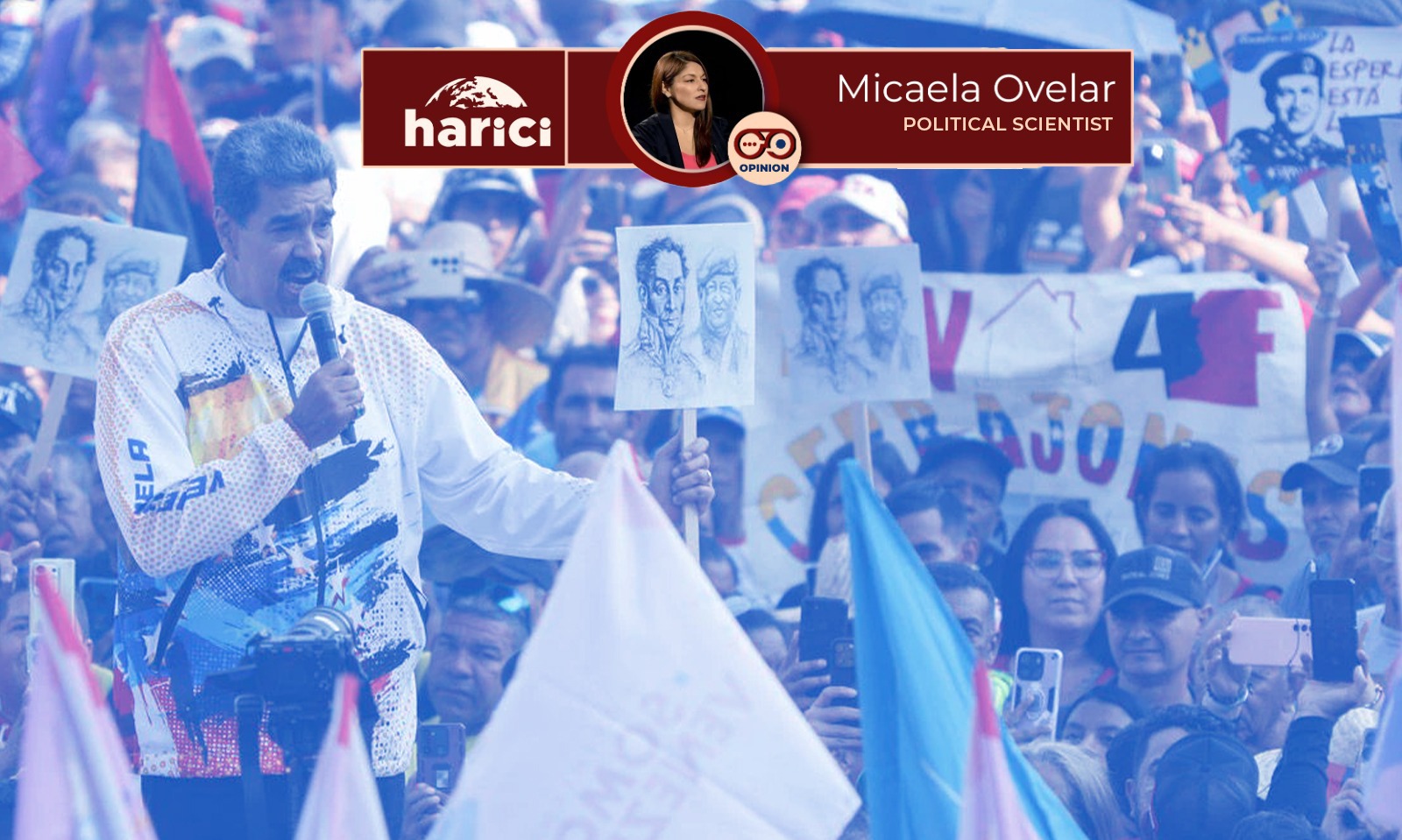
In what is already one of the most anticipated elections in the Latin American and Caribbean region, this March 25 the deadline established by the National Electoral Council (CNE) expired for political parties to officially nominate their candidates for President of the Bolivarian Republic in the electoral elections to be held on July 28. In total, thirteen (13) candidates has been registered, among them, as expected, is not María Corina Machado, who is disqualified by the Venezuelan Electoral Justice, but who in any case campaigned throughout the Caribbean country generating direct confrontation with the highest Venezuelan electoral authority and with the government of Nicolás Maduro.
The entire Venezuelan electoral process has been surrounded by criticism, speculation and conflicts within and between political parties, in addition to pressure and interference from the United States and part of the European Community to intervene in the election of candidates (such as María Corina Machado (who They are disqualified by the Venezuelan Electoral Power, for various irregularities, among which conspiracy and betrayal of the country stand out, to try to overthrow Nicolás Maduro. Although the economic and social situation has had a slight improvement in the last year, Venezuela is still going through an important socio economic crisis, which is why the result of the next presidential elections is uncertain.
Electoral schedule
On March 5, the Board of Directors of the Venezuelan National Electoral Council (CNE) unanimously established the date of the schedule that will be carried out in the coming weeks and months, establishing July 28, 2024 as the day for hold the presidential election, as announced by the president of the highest electoral authority, Dr. Elvis Amoroso, in the company of vice president Carlos Quintero and the rectors Rosalba Gil, Aimé Nogal and the rector Juan Carlos Delpino.
In accordance with the CNE decision, the special Electoral Registration day will take place from March 18 to April 16; The members of the subordinate electoral bodies will be selected on March 20; The presentation of candidate applications was scheduled from March 21 to 25; and the electoral campaign will begin on the 4th and will end on July 25.
Choosing the date was not an easy task nor was it born of free will, but rather it was a process of debate and democratic consultation that included the participation of political forces of various ideological orientations. The debate took place in the Venezuelan streets and in the respective grassroots organizations, as well as within the traditional political parties, and the proposals for tentative dates were presented
and defended in the Venezuelan National Assembly itself, within the framework of a National Agreement. on General Principles, Calendars and Electoral Guarantees. This Agreement was signed by the National Assembly with the different political sectors of the Caribbean country, and was subsequently presented for consideration by the CNE, on March 1st. Finally, the recommendations of the dates transmitted from the Legislative Branch to the Venezuelan Electoral Branch led to the decision to hold the next elections on July 28, the day that coincides with the birth of President Hugo Chávez (1954).
Confirmed candidates
The candidates who have run before the CNE for the 2024 Presidential Election are the following:
- For Chavismo: Nicolás Maduro (Gran Polo Patriótico)
For the opposition:
- Antonio Ecarri (Pencil Alliance)
- José Brito (First Venezuela)
- Juan Carlos Alvarado (Copei)
- Luis Eduardo Martínez (Democratic Action – AD)
- Luis Ratti (Popular Democratic Right)
- Benjamín Rausseo (National Democratic Confederation – Conde)
- Daniel Ceballos (Arepa Digital)
- Javier Bertucci (The Change)
- Leocenis García (Prociudadanos)
- Claudio Fermín (Solutions for Venezuela)
- Luis Enrique Márquez (Centers)
- Manuel Rosales (Fuerza Vecinal)
In this sense, the Venezuelan political organizations that have expressed their willingness to participate in the presidential elections are: Podemos; Communist Party of Venezuela (PCV); Love for Venezuela; Homeland For All (PPT), We are Venezuela; Alliance for Change; Green Movement of Venezuela; Future Venezuela; Venezuelan Popular Unity; Authentic Renewal Organization; Unified Trends to Achieve the Organized Revolutionary Action Movement (Tupamaro); People’s Electoral Movement, as well as; Democratic Action (AD); Red Flag (BR); Republican Movement (MR); National Student Union (UNE); Corn cake; Activist Popular Will; Pencil Alliance; Let’s Change Citizen Movement; National Integrity Movement – Unity; Progressive Advance; Independent Electoral Political Organization Committee (Copei); First Venezuela (PV); Venezuela Vision Unit; United Venezuela; Hope for Change; National Democratic Confederation (Conde); and Solutions for Venezuela; Popular Democratic Right.
The Bolivarian fury (La Furia Bolivariana)
Also, this Monday, March 25, the so-called Bolivarian Fury, forces that support and recognize the leadership of Nicolás Maduro, filled the center of the city of Caracas to join the “Great National March” to accompany the registration of his presidential candidacy. Maduro before the president of the CNE, Elvis Amoroso, and the rectors of the body.
In addition, the National Directorate of the United Socialist Party of Venezuela (PSUV), as well as the social movements and political organizations that make up the Great Patriotic Pole (GPP), participated in this activity.
In that sense, the first vice president of the PSUV, Diosdado Cabello, stated that: “today it is the PSUV’s turn to register its candidate, after more than 317 thousand assemblies throughout the country, where in a sovereign, democratic manner, our bases decided that brother Nicolás Maduro be the standard bearer of love for the Homeland.”
María Corina Machado’s substitute
Opposition leader María Corina Machado, disqualified by the CNE, nominated Corina Yoris, a renowned Venezuelan philosopher, 80 years old, who was a member of the commission that organized the October 2023 opposition primary, which chose Machado as a presidential candidate. of the opposition, even without being legally able to participate, participated in primaries controlled and observed only by the opposition.
Yoris, despite being a prominent Venezuelan academic, does not have extensive experience in Venezuelan politics, and is not widely known by the majority of the Venezuelan electoral population. However, the support and indication of María Corina Machado should be enough for Machado’s followers to automatically support her. The political forces that support his candidacy are the Un Nuevo Tiempo party and the Democratic Unity Roundtable.
At the end of this note, 8pm on Monday, March 25, Yoris has not been able to register his candidacy, registrations that are online and not in person, which is why a new wave of criticism has arisen on social networks and in the traditional press media, since it is understood that it is the government of Nicolás Maduro that would be preventing his candidacy. The extension of the deadline for the registration of applications by the CNE would also be evaluated. However, neither of these things has been confirmed at the moment.

Police violence continues on US campuses

The West doesn’t have a project, we should build a platform of peace and solidarity

Muslims react to Modi’s election speech targeting migrants as ‘hate speech’

UK adds £75 billion to defence budget

Fear of ‘Palestine’ on American campuses
MOST READ
-
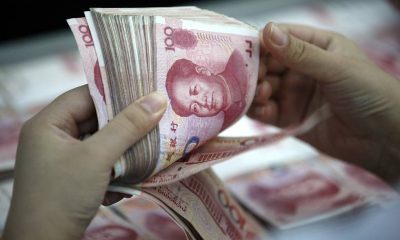
 ASIA2 weeks ago
ASIA2 weeks agoFour more Chinese banks stop accepting yuan payments from Russia
-

 ASIA2 weeks ago
ASIA2 weeks agoXiaomi’s breakthrough in the electric vehicle market: Intelligent Human-Car-Home Ecosystem
-
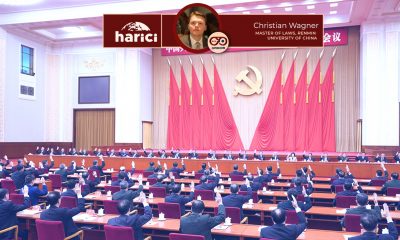
 OPINION1 week ago
OPINION1 week agoGrassroots Democracy in China: A Field Study
-

 INTERVIEW2 weeks ago
INTERVIEW2 weeks agoHow does Israel use social media and technology for disinformation?
-

 OPINION2 weeks ago
OPINION2 weeks agoIranian retaliation: Moving through conspiracy theories
-

 MIDDLE EAST2 weeks ago
MIDDLE EAST2 weeks ago‘Retaliation’ rift in Israel’s war cabinet
-
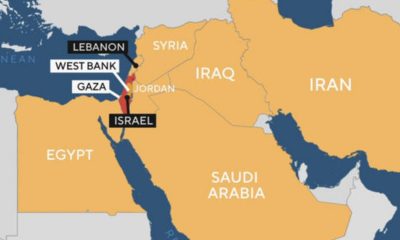
 ASIA2 weeks ago
ASIA2 weeks agoIranians see attacking Israel as legitimate self-defence
-

 INTERVIEW5 days ago
INTERVIEW5 days ago‘There is a migrant problem in Türkiye; if the situation in Afghanistan goes worse, it will be a serious problem’

